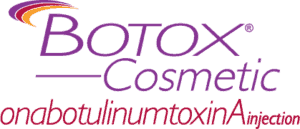Botox for Masseter Muscle Reduction

What is the masseter muscle?
The masseter muscle is located at the lower rear aspect of the cheek, running from the cheek bone down to the lower jaw on both sides of the face. The muscle connects the mandible (lower jawbone) to the cheekbone, and is known as one of the muscles of mastication (chewing), it’s function is to close the jaw while chewing.
Why does the masseter muscle sometimes need to be reduced?
In some people, the masseter muscle may become enlarged if they have a tendency to clench or grind their teeth (bruxism) or if they chew gum excessively. Unequal enlargement of the muscle may result in assymetry and increased bulk, creating an overly-square jawline.
If you are a woman, or you are seeking facial feminization, you may prefer a softer, smoother appearance to your jawline, and therefore wish to reduce the size of the masseter.
Typically, reduction of the masseter muscle is also deemed highly desirable by women of Korean ancestry. In this ethnic group, it is popular to reduce the masseter muscle to make the jawline appear smoother and more almond-shaped.
Non-surgical reduction of the masseter muscle using Botox® or Dysport®.
We recommend injectable muscle relaxing agents such as Botox® or Dysport® to non-surgically reduce the size of the masseter. These injections work extremely effectively to reduce the size of the muscle and also decrease any habitual jaw clenching or teeth grinding.
Non-surgical masseter muscle reduction involves your aesthetic nurse or plastic surgeon injecting Botox® or Dysport® directly into the masseter muscle in small doses over several sessions until the desired reduced appearance is achieved.
However, since this is a more advanced use of Botox® or Dysport®, your provider should have a comprehensive and indepth understanding of craniofacial anatomy–otherwise unintended side effects may result that may take weeks or months to resolve.
The effects of Botox® or Dysport® will be evident almost immediately after your initial treatment. You will experience less muscle pain and less TMJ-related headaches, typically in a few days, with the full effect of treatment realized in 3-4 weeks. After approximately 3-6 months you will begin to see noticeable and visible shrinkage of the masseter muscle.
You may need a series of several sessions to see the results you desire. However, this is the beauty of Botox® and Dysport® — it’s a gradual approach that allows you to work towards the degree of change you’re happy with. Injections of Botox® or Dysport® may need to be repeated every 4-6 months for at least a year to see a significant and obvious reduction in massetter muscle size. Depending on the individual, the decreased size of the masseter may stay intact — even without further injections of Botox®.
Surgical reduction of the masseter muscle.
Depending on your natural facial features and your desired aesthetic outcome, you may require a more aggressive approach to reduce the masseter muscle; and a surgical option will be recommended.
Read more about surgical reduction of the masseter muscle here.

 Botox for Masseter Muscle Reduction
Botox for Masseter Muscle Reduction